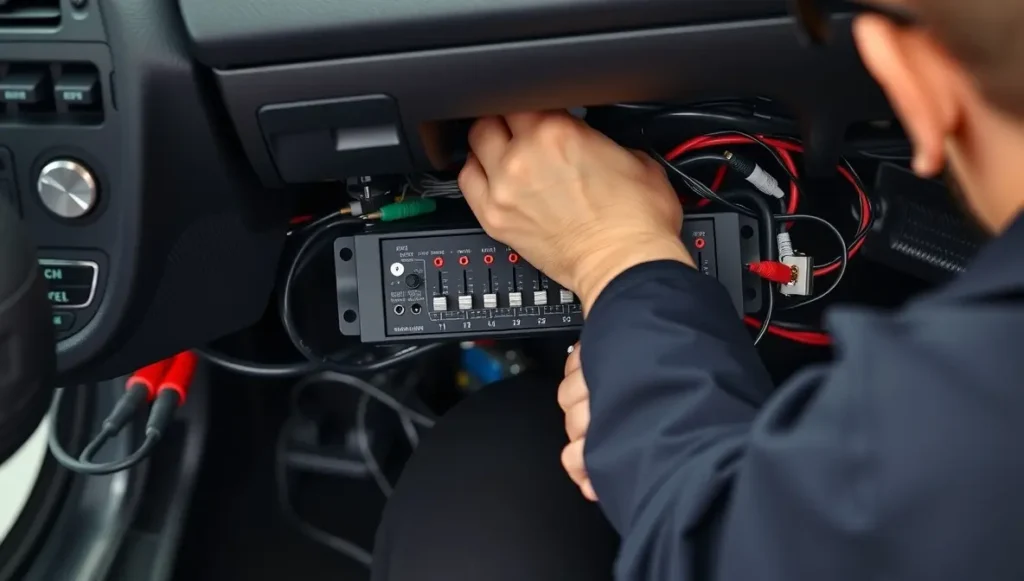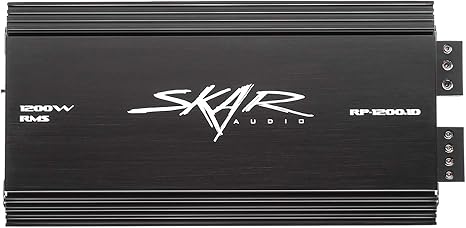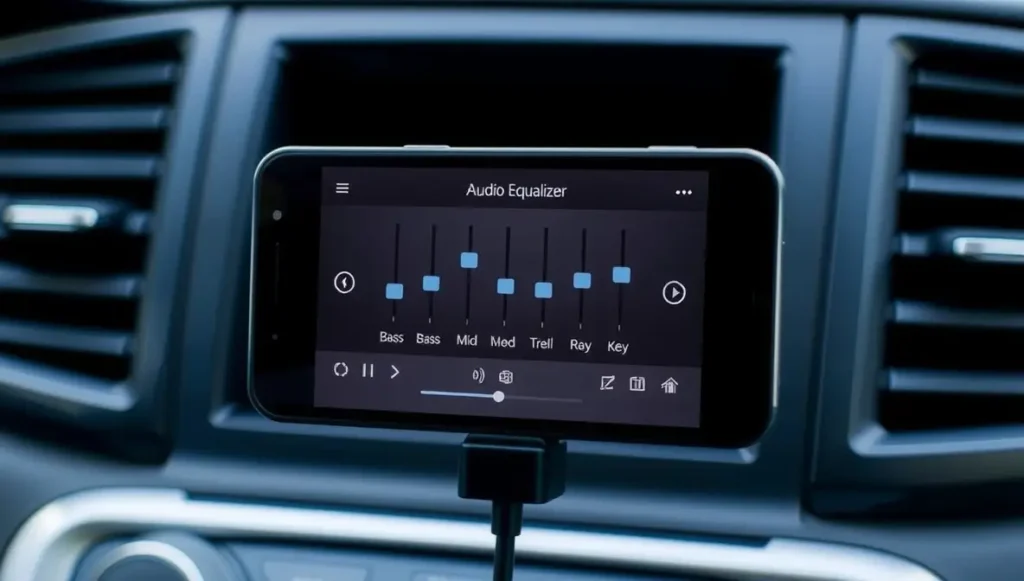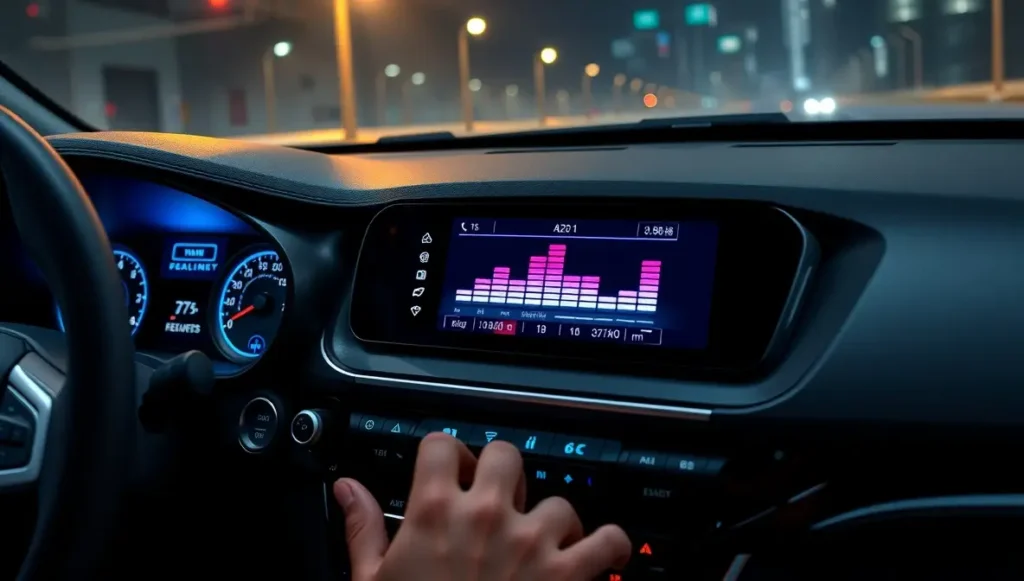You know that feeling when your favorite song plays, but it sounds flat, tinny, or just… off? That’s exactly why you need a car audio equalizer. It’s not a luxury, it’s the missing link between good and unforgettable sound.
With over 17 years of experience as an electromechanic, I can confidently say this: a car audio equalizer lets you customize every frequency (bass, mid, and treble) to match your car’s acoustics and your ears’ taste.
In this guide, you’ll find everything you need to know: how to install it, the best settings, prices, Bluetooth options, and even apps. I’ll answer all your burning questions and share expert tricks I’ve learned from years of tuning car audio systems.
Now that you know why an equalizer is a game-changer, let’s get into the practical side of things: how to bring this power into your car and what kind of investment you’re looking at.
Table of Contents
Installation & Investment: How to Install a Car Audio Equalizer and What It Costs

As an electromechanic, I live by the mantra: “right tool, right job, right method.” Installing an EQ is very achievable, but it requires patience.
How to Install a Car Audio Equalizer in a Car:
- There are two main types:
- Line-Level (Passive) EQs: These are the simplest. They plug into the RCA jacks between your head unit and amplifier. It’s a great “plug-and-play” option if you already have an aftermarket stereo and amp. Perfect for beginners!Speaker-Level (Active) EQs: These tap into the speaker wires after your factory head unit. This is the go-to method for those who want to keep their stock stereo but still want superior sound control. It requires a wiring harness tap and a bit more finesse.
Car Audio Equalizer Price & Finding One For Sale:
- The cost spectrum is wide, and that’s a good thing!
- Budget-Friendly ($50 – $150): Brands like Boss Audio or Planet Audio offer basic units. They get the job done for a noticeable improvement.Mid-Range & Sweet Spot ($150 – $400): Here you’ll find fantastic options from Rockford Fosgate, JL Audio, and AudioControl. These are built better, sound cleaner, and offer more bands of equalization for precise tuning. This is where I recommend most enthusiasts spend their money.High-End ($400+): For the true audiophile, brands like Mosconi and Audison offer DSPs (Digital Signal Processors), which are incredibly powerful computer-controlled EQs.
Don’t Skip the Amplifier – Here’s Why It Matters
Let’s have a real talk about power before we get to the fun part of tuning. Here’s the truth: a lot of folks don’t realize. you can have the world’s best equalizer, but if you’re running it through your car’s wimpy factory stereo or a low-budget amp, you’re just polishing a turd. You’ll turn up the bass and get nothing but distortion and heartbreak.
This is where pairing your EQ with a proper car equalizer amplifier(best choice in my opinion) changes everything. Let me break it down in simple terms.
Think of your EQ as the master chef—it’s perfectly seasoning the steak. But a chef is useless without a powerful, hot stove. That’s your amplifier. It’s the powerhouse that actually cooks the meal.

Hook your car audio equalizer up to a real amp, and you’ll feel the difference immediately. The bass hits clean and hard instead of sounding fuzzy. You can finally crank the volume without everything turning to static.
If you’re going to tune your sound, do it right. A good amp with your EQ isn’t an extra—it’s what makes the whole system come alive.
So you’ve got your car audio equalizer installed. Now for the really fun part: making it sound incredible. This is where we move from mechanic to artist.
Dialing In Perfection: Best car audio Equalizer Settings for Bass, Mid, and Treble
Let’s make your system sound right for you. No complicated terms, just straight talk.
Bass: The Feel-Good Thump
- Deep Bass (20-60Hz): This is the rumble you feel in your chest. Fun for electronic music, but easy to overdo. Too much turns your music into a muddy mess.
- Punchy Bass (60-250Hz): This is the sweet spot. A slight boost around 80Hz gives kick drums and bass guitars their power and warmth without sounding sloppy.
My Go-To Trick: Instead of cranking the bass, try gently lowering the low-mids (around 250Hz). This makes the bass sound clearer and more defined without the distortion.
Mids: Where the Music Lives
This is the heart of the song—vocals, guitars, the stuff you sing along to.
- The “Boxy” Zone (250-500Hz): If it sounds like the music is coming from inside a box, cut this range a tiny bit. It instantly adds clarity.
- The “In-The-Room” Effect (2kHz-4kHz): A small boost here makes vocals and solos cut through. It makes the singer sound like they’re right there in the car with you.
Treble: The Sparkle on Top
This is the detail and shine.
- Clarity (4-6kHz): Adds sharpness and definition. Too much makes it harsh and tiring to listen to.
- The “Air” (6-20kHz): A tiny lift here makes the music sound open and airy. Be gentle—it’s like adding a pinch of salt.
The Only Rule That Matters:
Forget anyone who gives you a “perfect” setting. It doesn’t exist.
Start with all sliders at zero (flat). Play a song you know by heart. Move one slider. Listen. Go back. Try another. Your ears and your favorite track are the best guides you have. It’s that simple.
The technology doesn’t stop at a physical box. Your smartphone has opened up a whole new world of tuning, often integrating seamlessly with modern hardware.
The Digital Maestro: Using a Car Audio Equalizer App & Bluetooth

The rise of the Car audio equalizer app and Car audio equalizer bluetooth connectivity has been a revolution.
How It Works: Many modern aftermarket head units from pioneers like Pioneer, Kenwood, and Alpine come with their own apps. These apps turn your phone into a wireless remote and advanced tuning interface for the EQ built into your stereo. You can make precise adjustments from your driver’s seat without fiddling with tiny buttons on the dash.
You’ve mastered sound tuning — now let’s explore which equalizer truly stands out from the crowd.
Best Car Audio Equalizer: My Professional Recommendations
After testing dozens of models over the years, here are my top picks for performance and reliability:
- Pioneer DEQ-S1000A: Compact, 13-band DSP equalizer with Bluetooth control. Perfect for those who love clean tuning.
- Clarion EQS755: A classic 7-band equalizer with strong low-end response — great for bass lovers.
- Boss Audio AVA1210: Budget-friendly, 7-band model with illuminated sliders and strong durability.
- AudioControl EQX: Professional-grade 13-band EQ and crossover — excellent for audiophiles.
Each of these offers something unique, but the key is to match your system’s power and type (amplified vs. non-amplified).
If you want a plug-and-play option, Bluetooth equalizers are a great modern choice — easy to control via smartphone and perfect for those who love fine-tuning their sound without touching a single knob.
Let’s wrap it all up with answers to the most common questions I get from car owners every week.
Burning Questions? I’ve Got Your Answers.
What equalizer setting is best for car sound?
The best setting enhances clarity without overpowering any frequency. A balanced setup is bass +3, mid 0, treble +2 — then adjust to taste.
Which car audio equalizer should I buy?
For top-tier performance, go Pioneer. For fantastic value that just works, grab a Clarion. You can’t go wrong.
What does a car EQ actually do?
It’s your precision tool for sound. It lets you cut through the mud, make vocals crystal clear, and get the bass hitting just right for your car.
How do I set my EQ properly?
Zero everything out first. Play a song you know by heart. Then, adjust one slider at a time. Small moves make all the difference.
Will an EQ actually make my cheap speakers sound better?
Heck yes. It’s the cheapest way to get a big jump in sound quality. It won’t turn junk into gold, but it’ll clean up the mud, punch up the bass, and make everything more balanced. You’ll hear details in songs you never knew were there.
How do I find my perfect EQ?
Use that song—the one you know every note of. Tune until it sounds so good you forget you’re even tuning and just get lost in the music.
Let’s Get Your Sound Sorted
You know what I love about this? Getting your hands on an EQ is one of those rare projects that’s equal parts mechanic work and pure magic. You’re not just bolting on a part – you’re tuning the soul of your system. One minute you’re running wires, the next you’re finding that sweet spot where the music just clicks. There’s nothing quite like it.
But here’s the real secret – the perfect sound is a moving target. What sounds amazing today might need a tweak tomorrow. And that’s the fun part.
Now, I’ve talked enough. This is where you jump in.
What are you working on in your ride right now? What’s that one problem that’s been driving you crazy? Maybe you’re fighting a wiring gremlin or just can’t get the kick drum to punch like you want.
Drop a comment below and tell me:
- What’s your go-to test song?
- What’s the biggest headache in your current setup?
- What car audio or mechanical topic should we tackle next?
Your questions are what make this real. Let’s keep this conversation going.
Now go put on some tunes and enjoy the ride.

